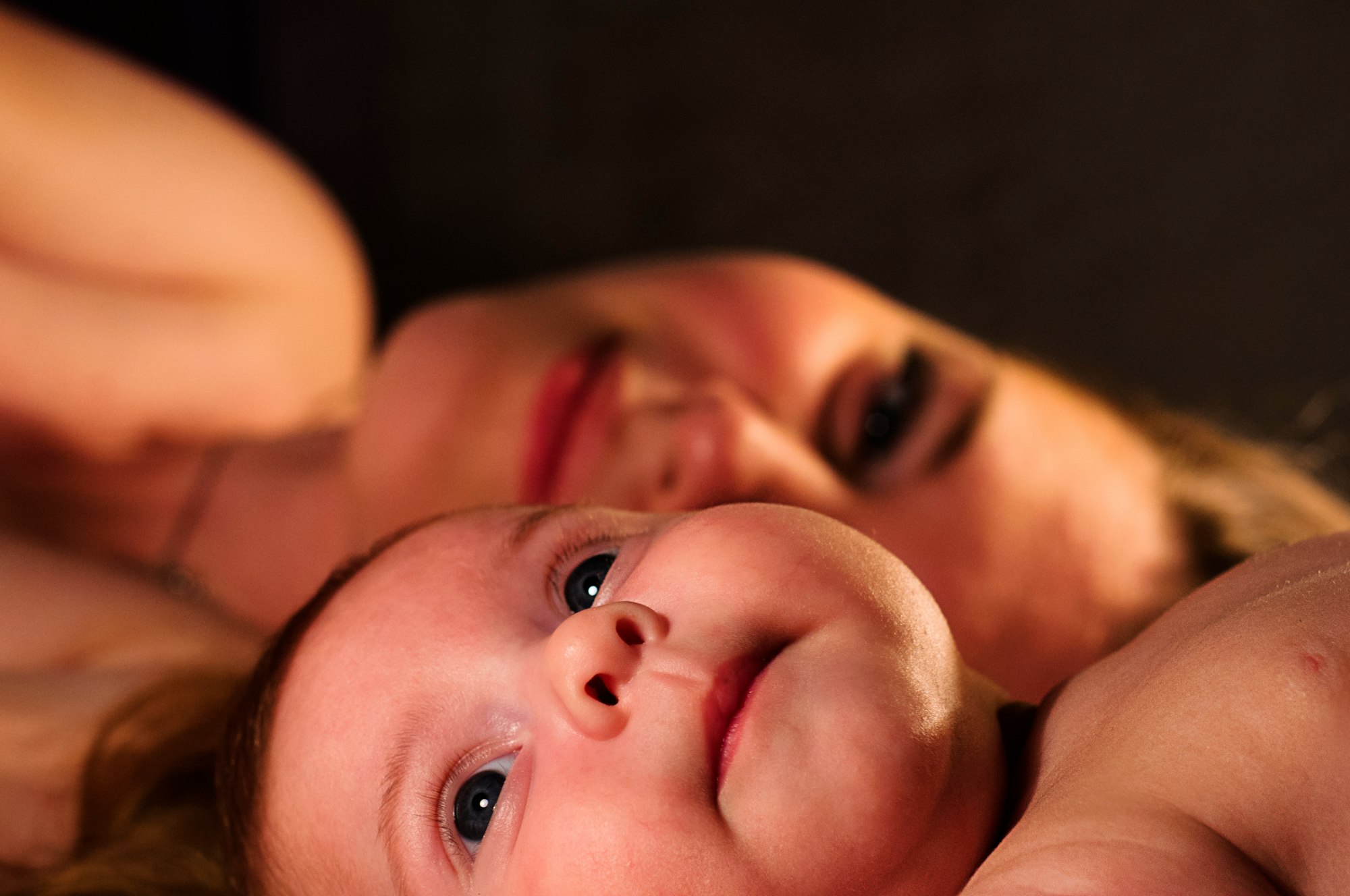The Incredible Skin-To-Skin Benefits You Should Take Advantage Of
Early skin-to-skin contact is very important, and the skin-to-skin benefits speak for themselves; skin-to-skin connection goes far beyond successful breastfeeding but has proven to calm and medicate babies, especially those sick and premature.

Skin-To-Skin Benefits
What Is Skin-to-Skin Contact?
Skin-on-skin contact is when mothers and babies are put together with their skin touching (no blanket or clothing in between them). You can also lay your baby on your abdomen or chest as much as possible; you do not need to breastfeed to benefit from skin-to-skin contact.
Are you wondering about breastfeeding? Read our article: Is breastfeeding important?
The best hospital warmers cannot warm a baby as quickly and efficiently as full-body skin contact with the mother. A mother's breasts are made to regulate a baby's temperature; in fact, mothers with twin babies will regulate temperature separately on each breast—warming and cooling them independently. No wonder babies are found to have higher levels of stress hormones when taken away from their mothers.
During skin-to-skin contact, your baby will not need to burn unnecessary calories to stay warm on their own. Having your baby close by will encourage breastfeeding, comfort your baby, and regulate heart rate and breathing.

Skin-to-Skin After Birth
Early skin-on-skin contact between the mother and baby after birth should be encouraged, even if the mother has had a c-section; they can spend this time together, even while she is stitched up. Unless medically necessary, things like suctioning and vitamin K injections can wait until a baby has latched on for the first time. Learn more about the importance of breastfeeding immediately after birth.

Breastfeeding Skin-to-Skin Benefits
The importance of skin-to-skin contact…
- A baby is usually more content and cries less. A baby will feel safe and can hear their mother's heartbeat, which is familiar to them.
- With skin-to-skin, the baby is more likely to maintain a stable temperature.
- Heart rates are more regular in babies who are kept skin-to-skin.
- A skin-to-skin newborn baby's blood sugar is stable.
- Having your baby skin-to-skin helps strengthen the maternal bond, but most mothers find that they can more easily recognize their baby's needs.
- When newborn skin-to-skin contact is practiced after birth, it allows a baby to familiarize themself with their mother's bacteria; this helps prevent allergic diseases.
- One significant skin-to-skin benefit is for premature babies: skin-to-skin contact with preemies can reduce the need for extra oxygen intake.
- Babies kept skin-on-skin for an hour after birth are likelier to latch on without help. Learn more about an amazing occurrence called the breast crawl; watch the skin-on-skin video.
- Skin-to-skin and breastfeeding: Babies who are kept close to their mothers via babywearing or kangaroo care are more likely to breastfeed exclusively and for much longer.
- Babies who are close to their mothers in this way usually have a more rhythmic breathing pattern.
- Babies kept close to their mothers skin-on-skin usually breastfeed more often, promoting a good milk supply.
- Skin-to-skin bonding: The physical contact will help a mom produce more of the hormone Oxytocin, improving milk let down and bonding.
- Many mothers have reported decreased breast engorgement pain during the first few days when/if they incorporate lots of skin-to-skin contact and skin-to-skin breastfeeding.
Early skin-to-skin contact is very important, and the skin-to-skin benefits speak for themselves; skin-to-skin connection goes far beyond successful breastfeeding but has proven to calm and medicate babies, especially those sick and premature.

The Tushbaby Hip Carrier
With its ergonomic design and comfortable waistband, Tushbaby provides optimal support for you and your baby. Say goodbye to shoulder and back pain from traditional carriers, as Tushbaby evenly distributes your baby's weight, relieving strain and promoting better posture.
What Are the 9 Stages of Skin-To-Skin?
Newborns exhibited a consistent pattern of behaviors shortly after birth: beginning with an initial cry and proceeding through stages of relaxation, awakening, activity, relaxation, crawling, familiarization, suckling, and finally, sleep.
What Happens if You Don’t Do Skin-To-Skin?
If skin-to-skin contact is not initiated, it disrupts the natural flow of Oxytocin. The continued release of Oxytocin is important for the contraction of the uterus and milk flow.
What Is the Best Position for Skin-To-Skin?
Position the baby upright between your breasts, making sure they are chest-to-chest with you. Their hips and arms should be flexed, resembling a small frog. Your baby's cheek should be against your skin, with their chin slightly lifted to allow for easy breathing. Their head should be near enough for you to kiss them.
How Many Weeks Is Skin-To-Skin Beneficial?
The positive effects of skin-to-skin contact aren't limited to just the moments after birth. You can keep engaging in this practice for several months or for as long as you both enjoy it.
